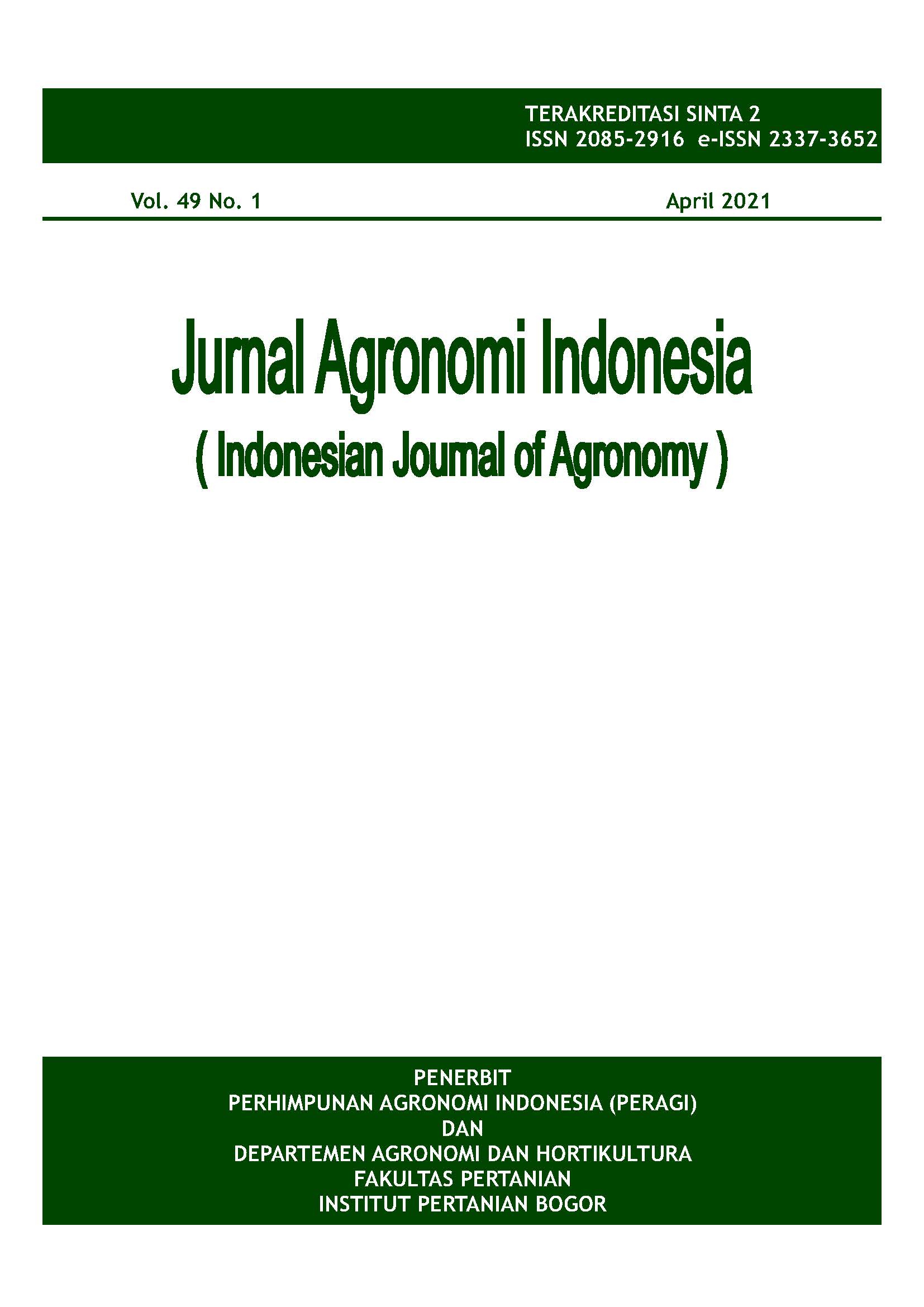Efisiensi Penggunaan Nitrogen pada Padi Gogo Varietas IPB 9G
Abstract
Rice is a major staple food in Indonesia. Some new upland rice varieties have been released and should be accompanied by accurate fertilization dosage at a specific location. One of the fertilizers is nitrogen (N). The objective of this research was to evaluate N use efficiency in upland rice variety IPB 9G as a response to N dose. The N doses were 0, 46, 92, 138, and 184 kg N ha-1 (using urea 46% N). The experiment was conducted using a randomized complete block design with three replications in Darmaga, Bogor in March-July 2018. The plot size of each N dose was 3.5 m x 3.0 m. The N use efficiency was determined through rice growth, N uptake, agronomical and physiological efficiency. Plant height and tiller number increased followed the increase of N dose. The N uptake and grain yield had a quadratic response to the N dose which could be an indicator of the N fertilizing efficiency. The maximum N uptake and grain yield were achieved at an average of 143.8 kg N ha-1 (312.5 kg urea ha-1). The recommendation of N fertilizing for soil with moderately N (0.27%) during the dry season was 143.8 kg N ha-1 (312.5 kg urea ha-1), as it is the most efficient dose in IPB 9G cultivation.
Keywords: agronomical efficiency, grain yield, N uptake, physiological efficiency














